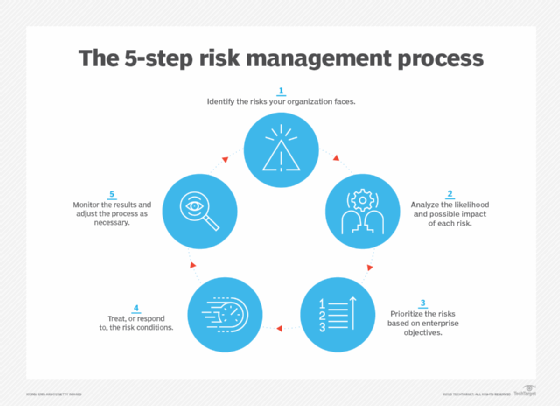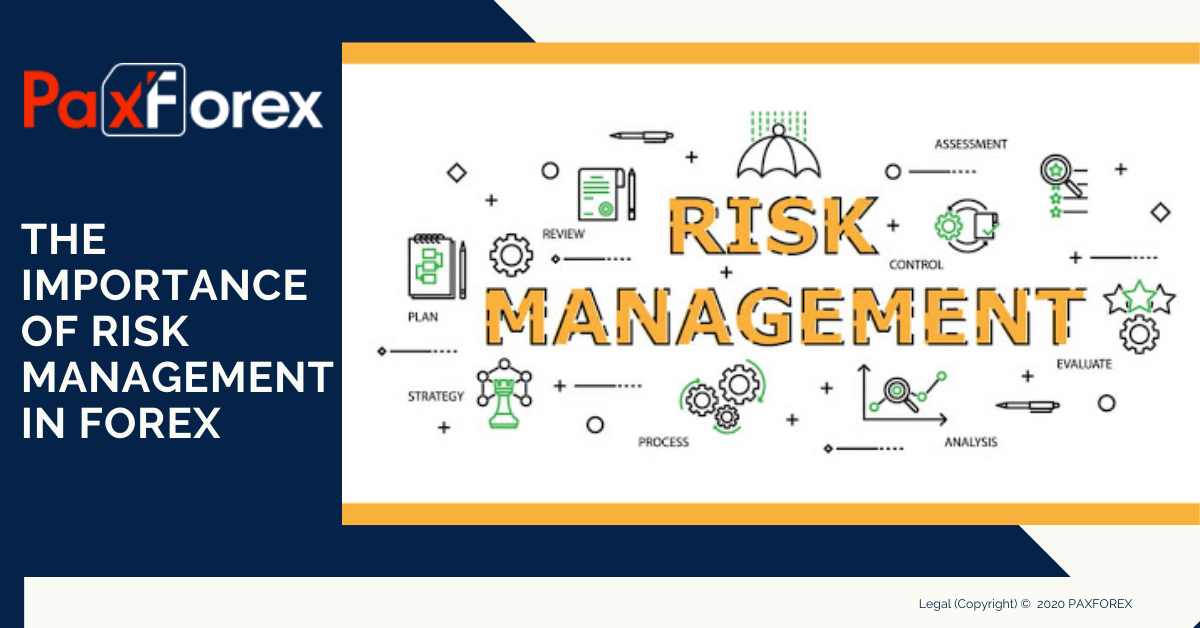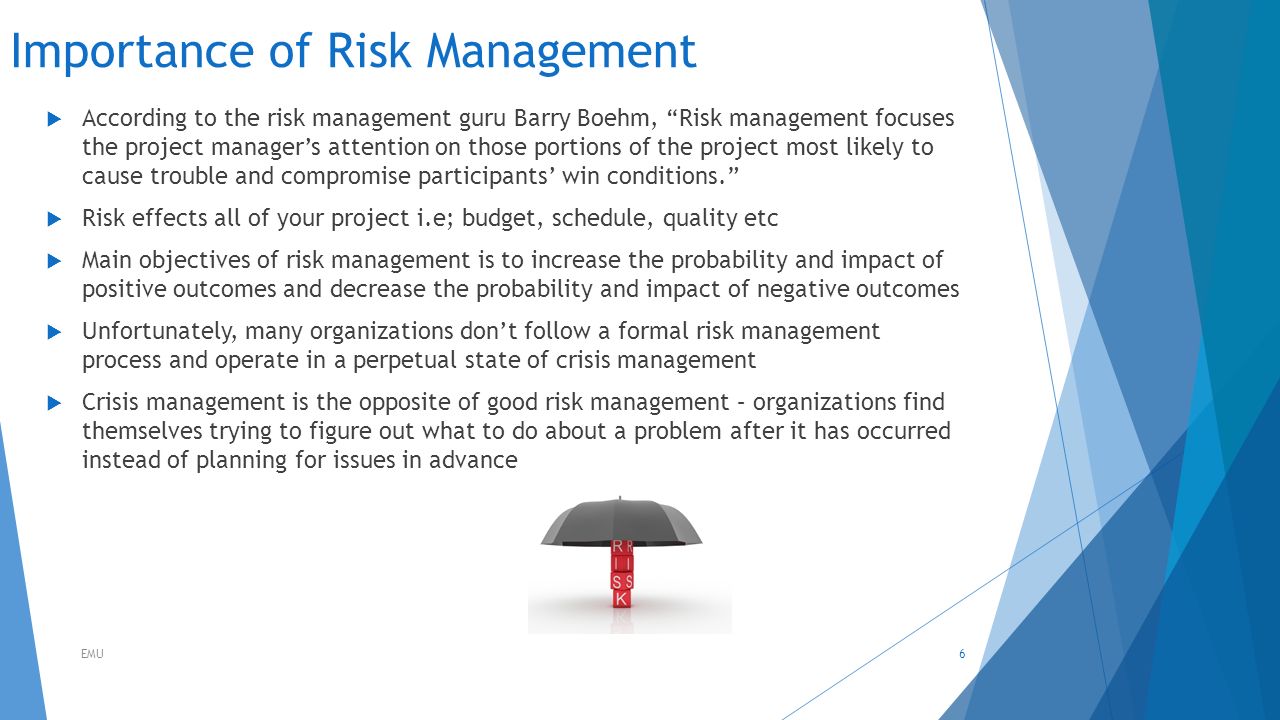Navigating the Difficulties: Understanding the Importance of Risk Management
Navigating the Difficulties: Understanding the Importance of Risk Management
Blog Article
Exploring the Importance of Risk Management for Effective Decision-Making Methods
In the elaborate globe of service, Risk Management emerges as a crucial consider the decision-making procedure. The capability to determine possible hazards and opportunities, and plan as necessary, can mean the distinction between success and failing. With tools such as SWOT and PESTEL, companies are geared up to make educated choices, fostering resilience and flexibility in an ever-changing setting. Wondering just how this works? Allow's unload the dynamics better.
Understanding the Idea of Risk Management
Risk Management, a vital element in decision-making, is usually misconstrued or oversimplified. Generally, it refers to the recognition, examination, and prioritization of dangers to decrease, keep track of, and control the likelihood or influence of unfortunate occasions. It's not just regarding protecting against adverse results, yet additionally concerning identifying potential chances. Risk Management includes self-displined and organized approaches, using information and informative analyses. It needs a detailed understanding of the company's context, objectives, and the prospective risks that could prevent them. From economic uncertainties, lawful responsibilities, strategic Management errors, to accidents and all-natural catastrophes, it attends to numerous dangers. Notably, reliable Risk Management is not stationary; it's a continuous, forward-looking procedure that advances with altering scenarios.
The Role of Risk Management in Decision-Making Processes
In the realm of tactical planning and business operations, Risk Management plays an important function in decision-making procedures. Risk Management hence comes to be a vital tool in decision-making, assisting leaders to make educated selections based on an extensive understanding of the risks included. Risk Management serves as an important element in the decision-making procedures of any company.

Exactly How Risk Management Boosts Strategic Planning
In the context of critical planning, Risk Management plays an essential function. Starting with the identification of prospective threats, it further reaches the implementation of Risk reduction actions. The function of Risk Management is vibrant yet not static, as it requires constant tracking and adjusting of strategies.
Determining Potential Risks

Applying Risk Reduction
Risk mitigation techniques can vary from Risk evasion, Risk transfer, to take the chance of reduction. Each strategy ought to be tailored to the details Risk, considering its possible impact and the company's Risk resistance. Reliable Risk mitigation calls for a deep understanding of the Risk landscape and the possible influence of each Risk.
Surveillance and Readjusting Techniques
Though Risk mitigation is a crucial action in strategic planning, continuous monitoring and change of these approaches is similarly essential. This recurring procedure enables companies to identify new risks and reassess existing ones, ensuring the executed strategies remain reliable in the ever-changing company setting. It likewise offers a chance to evaluate the success YOURURL.com of the Risk Management procedures, permitting adjustments to be made where required, more boosting calculated preparation. Reliable surveillance and change need making use of analytics and essential performance signs (KPIs) to measure effectiveness. These tools provide useful data-driven understandings that can educate critical decision-making. Monitoring and changing Risk Management approaches is a crucial component for boosting an organization's strength and tactical planning.
Case Researches: Successful Risk Management and Decision-Making
In the world of service and finance, successful Risk Management and decision-making typically serve as the columns of prosperous business. These situations highlight the worth of astute Risk Management in decision-making processes. These cases emphasize the crucial role of Risk Management in calculated decision-making.
Devices and Strategies for Reliable Risk Management
These devices, such as Risk registers and warmth maps, aid in identifying and evaluating possible risks. Risk reaction techniques, a vital element of Risk Management, include accepting, staying clear of, moving, or mitigating dangers. With these devices and techniques, decision-makers can navigate the facility landscape of Risk Management, thereby assisting in notified and effective decision-making.
Future Trends in Risk Management and Decision-Making Approaches
As we check out the huge landscape of Risk Management, it ends up being evident that the strategies and devices made use of today will remain to advance. Future trends point towards an enhanced reliance on read what he said technology, with man-made intelligence and maker knowing playing significant functions. These innovations will certainly enable companies to forecast prospective dangers with better precision and make more educated choices. Additionally, there will be an expanding emphasis on durability, not just in taking care of threats but also in bouncing back from negative situations. The concept of Risk culture, where every member of a company is mindful and involved in Risk Management, will obtain more importance. These trends herald a more proactive and comprehensive method in the direction of Risk Management and decision-making.
Final thought

Risk Management thus ends up being a crucial tool in decision-making, helping leaders to make informed choices based on a thorough understanding of the dangers involved. Risk mitigation strategies can range from Risk avoidance, Risk transfer, to risk decrease (importance of risk management). Effective Risk mitigation requires a deep understanding of the Risk landscape and the prospective influence of each Risk. Risk feedback methods, an essential part of Risk Management, involve accepting, avoiding, moving, or mitigating dangers. The idea of Risk culture, where every member of an organization is mindful and entailed in Risk get more Management, will obtain much more prominence
Report this page